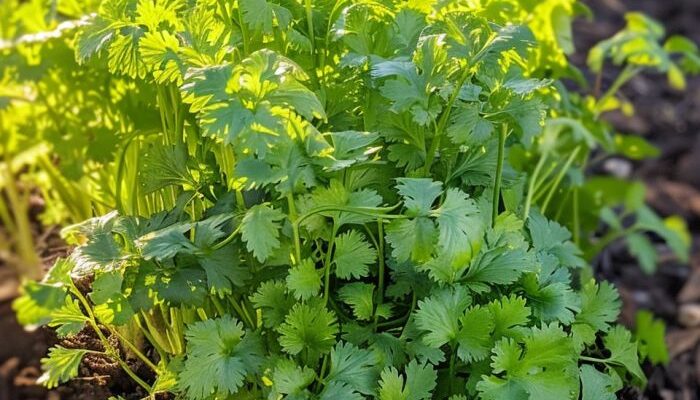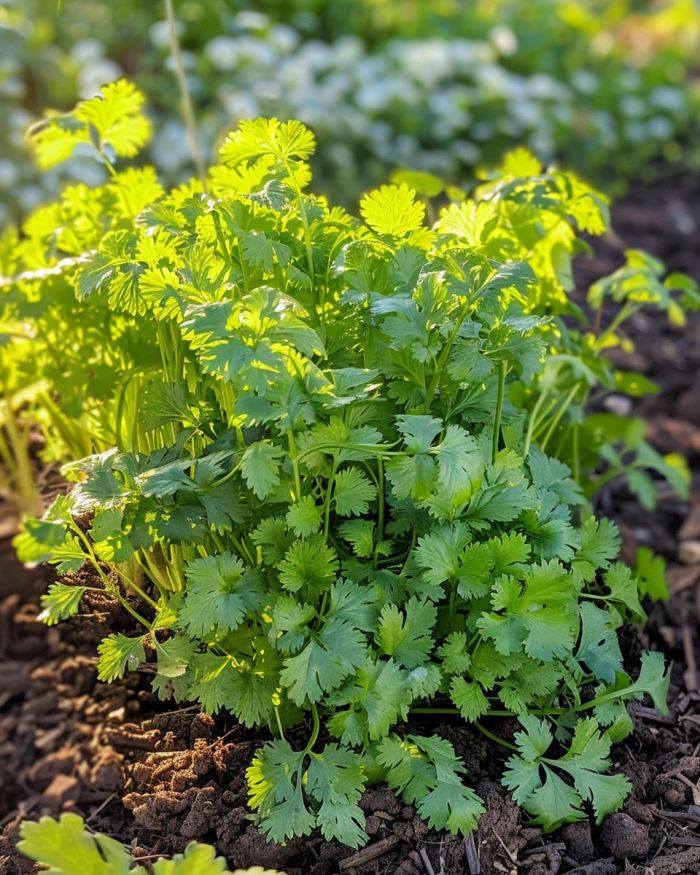|
Cilantro, also known as coriander, is a popular culinary herb with a fresh, pungent flavor that brightens up dishes in cuisines around the world. Rather than purchasing bunches of cilantro every few days only to watch them wilt away before you’re able to use it all, why not grow your own continuous supply?
Not only will this save you money in the long run, but it will also ensure that you have the freshest cilantro possible at your fingertips. In this article, we’ll explore 10 methods for maintaining a never-ending supply of this beloved herb.
ADVERTISEMENT
1) Choose the Right Variety for Repeated Harvesting
Selecting the right variety of cilantro is critical. Look for slow-bolting varieties that are less prone to flowering, which extends their leaf-producing phase. Varieties such as ‘Calypso’ or ‘Leisure’ could give you a longer harvest period.
2) Start with Quality Soil
Cilantro thrives in well-draining soil rich in organic matter. Add compost to your garden beds or containers to give cilantro the nutrients it needs to grow lush and full.
3) Sow Seeds Successively
To ensure a continuous yield, practice successive planting. Sow seeds every 2-3 weeks. As one batch starts to mature, another will be coming up behind it. This way, you have a constant supply of cilantro leaves to harvest.
4) Proper Spacing is Key
Give each cilantro plant enough space to grow. Dense planting can lead to competition for resources, which may reduce your overall yield. Aim for a spacing of about 3 to 4 inches between plants.
5) Harvest Regularly
Regular harvesting encourages new growth and can prevent the cilantro from bolting, which is when the plant starts to flower and the leaves become more bitter. Cut the top leaves and use them in your cooking while allowing the bottom leaves to continue growing.
6) Utilize Container Gardening
If you’re short on space, growing cilantro in containers is a great solution. This method also allows you to easily move the plants around to manage sun exposure and temperature, both of which can affect the plant’s growth and flavor.
7) Control the Temperature
Cilantro prefers cooler temperatures, typically between 50 to 85°F (10–29°C). During hotter months, provide shade to prevent the plants from bolting prematurely.
8) Protect from Pests
Aphids and other pests can hinder your cilantro’s growth. Protect your plants by using organic pest control methods, such as neem oil or a strong jet of water to knock pests off the plants.
9) Practice Good Watering Habits
Cilantro likes consistent moisture, but be wary of overwatering which can lead to root rot. Water deeply and allow the top inch of soil to dry out between watering sessions.
10) Save and Sow Your Own Seeds
Once your cilantro plants do bolt and produce seeds, save these coriander seeds to plant your next crop. Not only do they provide a secondary yield in terms of spice, but planting your own seeds can make the whole process more cost-effective and self-sustaining.
ADVERTISEMENT
By embracing these methods, you can enjoy a regular and robust supply of cilantro from your own garden. Not only will this save you money, but it will also enrich your meals with the freshest flavors possible. Happy planting and harvesting!
|
Stop spending on cilantro. Embrace these 10 methods for a continuous cilantro yield.




